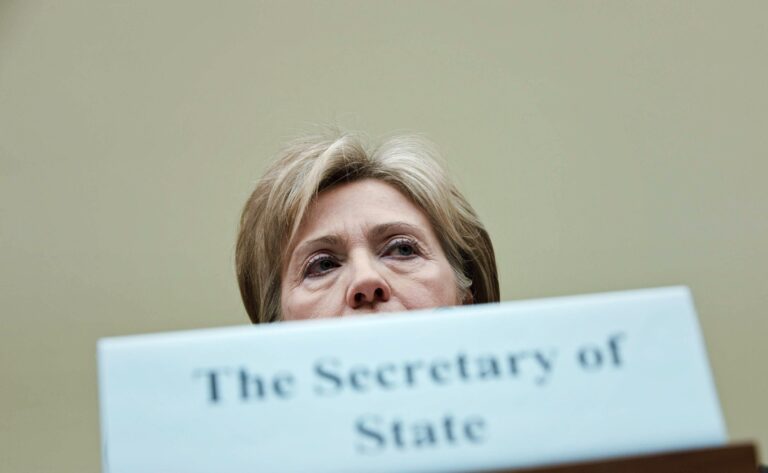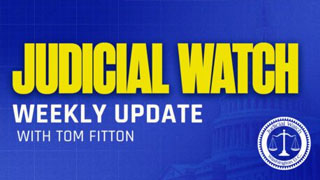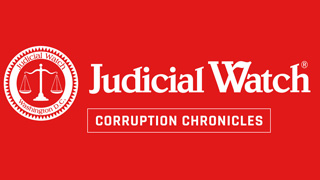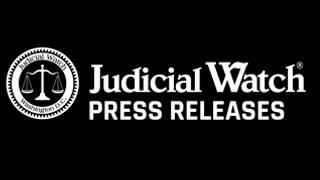

Judicial Watch: New State Department Documents Reveal Hillary Clinton Email Gap


(Washington, DC) – Judicial Watch today released newly obtained Department of State documents showing a nearly five-month total gap in the emails former Secretary of State Hillary Clinton decided to return to the State Department late last year. The documents also show that one key State Department official did not want a written record of issues about the Clinton emails. The documents also raise new questions about the accuracy of representations made to Judicial Watch, the courts, Congress, and the public by the Obama administration and Clinton.
The documents were produced under court order in a Freedom of Information Act (FOIA) lawsuit Judicial Watch filed on May 6, 2015 (Judicial Watch, Inc. v. U.S. Department of State (No. 1:15-cv-00687)). The lawsuit was filed after the Obama State Department violated federal law and failed to respond to two separate FOIA requests, including a request for records about the actual production of the emails records by Clinton to the State Department. The first batch of documents obtained by Judicial Watch contains a heavily redacted email from State Department official Eric F. Stein to Margaret P. Grafeld, dated April 21, 2015, with the subject “HRC Emails.” Stein is deputy director of global information systems at the State Department and Grafeld is deputy assistant secretary of global information systems. Stein reports to Grafeld that the “gaps” in Clinton’s emails include:
- Jan. 21 – March 17, 2009 (Received Messages)
- Jan. 21 – April 12, 2009 (Sent Messages)
- Dec. 30, 2012 – Feb. 1, 2013 (Sent Messages)
In addition, Stein notes Clinton’s employment timeline as follows:
- Secretary Hillary Clinton
- Appointed: January 21, 2009
- Entry on Duty: January 21, 2009
- Termination of Appointment: February 1, 2013
The email also contains a chart detailing the first and last emails both sent and received to Clinton’s email address, as documented in the records turned over by Clinton’s lawyers. This chart, information from which is chopped off, reveals a non-state.gov email address Cheryl Mills evidently used to conduct government business. The email address, “[email protected],” received the last email the State Department currently has from the Clinton’s non-state.gov account.
The chart shows a significant email gap lasting 40 days before Miguel Rodriguez, with the email address “Miguel_Rodriguez @clinton.senate.gov,” sends Clinton’s account an email on March 18, 2009. Rodriguez worked in the Clinton State Department and is now a private attorney representing Clinton aide and confidante Huma Abedin in Clinton email-related litigation. This “email gap” information was forwarded to other top officials in the State Department, including Under Secretary of State for Management Patrick Kennedy.
These emails raise questions about whether Clinton told the truth last month when she declared, under penalty of perjury, “I have directed that all of my emails on clintonemail.com in my custody that were or potentially were federal records be provided to the Department of State….” Clinton made this statement in response to a court order Judicial Watch obtained in separate FOIA litigation.
Another new State Department email shows that one of the agency’s top officials for records management and public disclosure did not want to create a written record about issues. State Department FOIA official Peggy Grafeld, in an October 20, 2014, email wrote to her colleagues, “Fyi. I’d prefer to discuss, rather than email. Thx.” The State Department redacted details about what caused Grafeld’s desire for secrecy.
The State Department almost completely redacted several September 25, 2014, “high” importance emails about Clinton’s emails, including information about “earlier conversations and fact finding.”
A February 9, 2015, document, “Secretary of State Hillary Clinton Email Appraisal Report,” describes the emails that Clinton returned in December 2014 “as approximately 60,000 to 70,000 pages of email correspondence printed to paper and stored in twelve bankers boxes.” The “records document major foreign policy issues as well as the administration and operation of the Department and inter-agency activities. They reflect the highest level of decision-making and activity in the Department and contain significant documentation.”
The “Appraisal Report” shows the State Department had concerns that Clinton’s government email correspondence would not be found:
This record series is the only comprehensive set of Secretary Clinton’s email correspondence. Some of Secretary Clinton’s email correspondence may be available elsewhere in the Department either as duplicate copies or scattered among record-keeping systems and other government officials’ email accounts. However, of the sample examined, many of the emails were from Secretary Clinton’s personal email account to official Department email accounts of her staff. Emails originating from Secretary Clinton’s personal email account would only be captured by Department systems when they came to an official Department email account, i.e., they would be captured only in the email accounts of the recipients. Secretary Clinton’s staff no longer work at the Department, and the status of the email accounts of Secretary Clinton’s staff (and other Department recipients) is unknown at this time.
The report confirms Clinton’s alleged personal emails from her non-state.gov account are government records:
This collection contains instances of personal communications. Nevertheless, the fraction of personal communications is small and does not affect the overriding archival value of this collection. This records series meets all of the relevant considerations for archival retention under NARA Directive J 441.
The report next confirms that all of Clinton’s emails are “Federal records.” A section entitled “Record status” states:
This records series meets the statutory definition for Federal records. Recorded information has record status if 1) ”made or received by a Federal agency under Federal law or in connection with the transaction of public business” and 2) “preserved or appropriate for preservation.” The sent and received email messages of the Secretary of State used for review, comment, information, or other reason fall under the first part of that definition. As the person holding the highest level job in the Department, any email message maintained by or for the immediate use of the Secretary of State is “appropriate for preservation.” This record series cannot be considered personal papers based on the definition of a record in 44 U.S.C. 3301 or Department policy found in 5 FAM 443.
The report suggests that all of the emails that Clinton returned, including personal emails, are subject to review and retention retained by the National Archives (NARA). A section titled a “Note On Personal Papers” states:
This record series contains instances of personal communications that relate solely to Secretary Clinton’s personal and private affairs. The Agency Records Officer conducted a page-by-page review of approximately 1,250 pages of received messages for the period March 15, 2010 through April 30, 2010 to determine the prevalence of personal communications in a random sample of material. The Agency Records Officer identified 30 messages (approximately 30-40 pages) in the sample set as solely personal in nature. These messages were interspersed with significant documentation relating to Haiti, Mexico, Israel, Afghanistan, Russia, and South Africa. Since NARA possesses the legal authority to make the final determination of record status under the Federal Records Act Amendments of 2014, all final decisions must be made by NARA at the time of archival accessioning. [Emphasis in original]
The report also confirms that all of Clinton’s emails are subject to “line by line review” for release under FOIA.
State Department rules “specify that personal records of a departing Presidential Appointee may not be removed from the government until the State Department ‘records officer…’ approves of the removal, a process which ‘generally requires a hands-on examination of the materials,’” as Judicial Watch noted in litigation seeking preservation, recovery, and search of deemed-personal emails that Clinton has not turned over to the State Department, FBI, or Justice Department.
The “Appraisal Report” is at odds with claims by Clinton and the Obama administration that Clinton can delete over 30,000 personal emails from non-state.gov email accounts she used for government business. In fact, the “Appraisal Report” suggests that all of Clinton’s personal emails are Federal records subject to “line by line” review for possible disclosure in response to FOIA and other document requests. Finally, the documents reveal the State Department raised concerns about classified information in Clinton’s possession back in March. A March 23, 2015, letter to Clinton attorney David Kendall states, in part:
We understand that Secretary Clinton would like to continue to retain copies of the documents to assist her in responding to congressional and related inquiries regarding the documents and her tenure as head of the Department. The Department has consulted with the National Archives and Records Administration (NARA) and believes that permitting Secretary Clinton continued access to the documents is in the public interest as it will help promote informed discussion…In the event that State Department reviewers determine that any document or documents is/are classified, additional steps will be required to safeguard and protect the information. Please note that if Secretary Clinton wishes to release any document or portion thereof, the Department must approve such release and first review the document for information that may be protected from disclosure for privilege, privacy or other reasons.
“Judicial Watch’s discovery of the Clinton email ‘gap’ may take a place in history next to the discovery of the Nixon tapes,” said Judicial Watch President Tom Fitton. “The Obama administration and Hillary Clinton have taken their cover-up of the email scandal too far. I suspect that federal courts will want more information, under oath, about the issues raised in these incredible documents.”
Judicial Watch has 20 federal lawsuits against the State Department in which the Clinton email issue is implicated. Judicial Watch seeks discovery and additional requests for court relief are planned.
###















